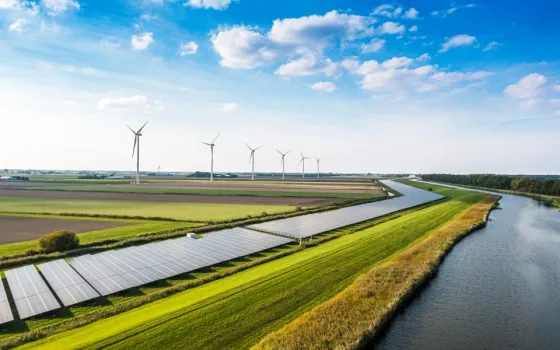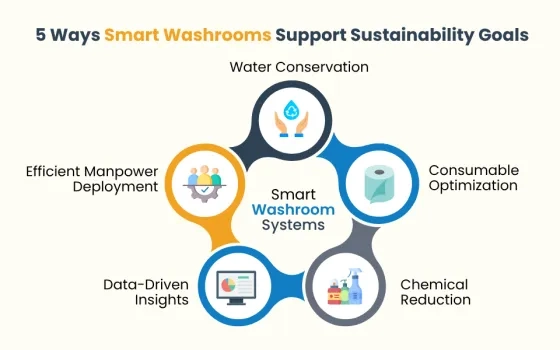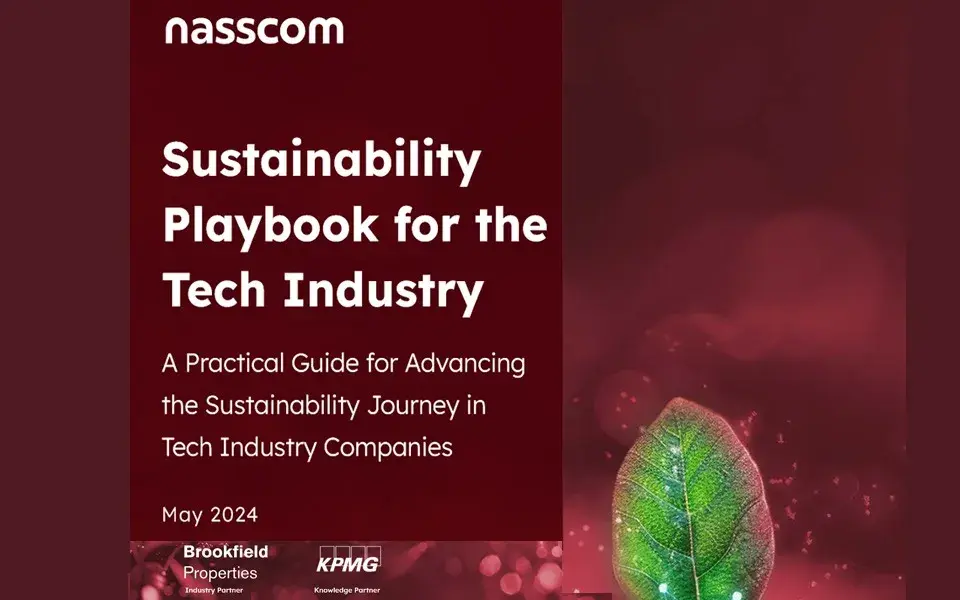14 years ago, the science fiction disaster film – 2012 – sounded alarm bells for climate change devastation. Thankfully, earthquakes, volcanic eruptions and super tsunamis haven’t hit us at the magnitude we saw on screen. But time is running out before fact meets fiction.
Every United Nations (UN) media announcement in the last decade has recorded instances of unusually high temperatures, unprecedented storms, and increased instances of drought across the world. Science fiction movies like 2021 and The Day After Tomorrow have merged conspiracy theories with real-world statistics – all pointing towards the impending disasters that come as a result of climate change. A crucial part of the sustainability puzzle, climate change has made it into school textbooks as well as scientific research documents, highlighting the urgency with which it has to be mitigated. While many statistics and numbers show the scary picture of climate change, the one that we should really care about is this: Global surface temperature between January to July of 2023 has been 1.85 degrees Fahrenheit more than the average between 1901 and 2000. While the world hasn’t ended yet, serious efforts need to be made to carve a better future that is liveable, sustainable and productive. To this end, many countries are doing their bit, and one can reasonably hope that significant strides can be made sooner than later.
Before we proceed to deep-dive into the real state of climate change affairs, do remember that we started this blog series on sustainability by identifying the four universal pillars of sustainability, that provide a blueprint of sorts to align, advocate and engage in sustainability initiatives. These are Climate Change, Circular Economy, Supply Chain Sustainability and Innovative Solutions. Today, we are talking about climate change for a better tomorrow.
Do it like the Danish
Denmark has made it to the top of the Climate Change Performance Index (CCPI), a scoring system designed by the German environmental and development organisation, Germanwatch, with the aim of enhancing transparency in international climate politics, based on a standardized framework that rates 63 countries and the EU across four categories, namely greenhouse gas emissions, renewable energy, energy use and climate policy. Denmark’s CCPI leadership is mainly driven by its commitment to achieving a 70% emissions reduction compared to 1990 levels, and its vision to achieve climate neutrality by 2050. Interestingly, Denmark is at the 4th spot of the CCPI rankings, with the top 3 lying empty owing to no country deserving to be up there. That aside, Denmark has achieved massive gains by penalizing energy overuse and misuse, while having a long-term vision in place.
Global climate change frameworks
UN has started doing its bit too. Quoting from its climate action plan, “a growing coalition of countries, cities, businesses and other institutions are pledging to get to net-zero emissions. More than 70 countries, including the biggest polluters – China, the United States, and the European Union – have set a net-zero target, covering about 76% of global emissions. More than 3,000 businesses and financial institutions are working with the Science-Based Targets Initiative to reduce their emissions in line with climate science.” Also, the famous Paris Agreement of 2015 carved out a global framework to avoid dangerous climate change by limiting global warming to well below 2°C and pursuing efforts to limit it to 1.5°C.
Both sides of the India story
Owing to its massive population, higher pollution levels, and prevalence of industries, one would naturally expect the country to be faring way behind its peers. But the good news is that India is just three steps behind Denmark in the CCPI rankings, much above UK, Germany and other industrial biggies. India’s per capita emission of 2.4 tonnes of carbon dioxide equivalent (CO2e) is well below the global average of 6.3 tonnes of CO2e in 2020. India is also leading the world in transitioning to a low-carbon economy. The country has achieved its commitment to non-fossil fuel capacity addition (made in the Nationally Determined Contributions or NDCs) ahead of the target year 2030. As per the new NDC, India is committed to reducing the emissions intensity of its Gross Domestic Product (GDP) by 45% by 2030 from the 2005 level and achieving about 50% cumulative electric power installed capacity from non-fossil fuel-based energy resources by 2030.
However, the flip side of the coin presents a scary picture. In 2022, the average AQI of particular matter across India was 10.7 times the annual WHO guideline. The country is also battling with a unique yet serious environmental issue of crop burning. From 2003 to 2019, burning of agricultural residue caused 44,000–98,000 particulate matter exposure-related premature deaths annually, and today, India generates around 500 million metric tonnes of crop residue annually, of which 100 MT is burned. This causes average temperatures to rise across the Northern agricultural belt of the country, resulting in erratic weather phenomena leading to rapid climate change. Thankfully, Government bodies and regulatory authorities are pushing for a multitude of changes ranging from awareness in crop management, electric public mobility and renewable energy across the board.
The combination of government impetus, industry thrust and stringent compliance is seeing India through. But a vital cog in the wheel needs to oil itself to complete the ‘last mile’ of the climate change journey…
Role of new-gen technology and the need for behavioural change
… and that is the technology solutions and services industry. The last mile today is all of the compute devices we use – on premise or on the cloud. Every new technology from AI to ML to deep learning puts huge stress on the environment indirectly, even if most of it is cloud-operated today. Hence, the responsibility lies on the shoulders of IT solution providers to ensure that their offerings are climate-change friendly. On one hand, enterprises are earmarking millions of dollars to the cause of climate change, but by simply making their solutions sustainable, they can play a huge part, especially in a country like India that is currently witnessing recession-proof growth in IT. These solutions range from sustainable cloud data centers to smart hybrid workplaces to sustainable customer experience and data management solutions. Not to forget the core and edge components that enable new-generation cloud computing. By embedding micro technologies aimed at sustainability within larger technology solutions, the industry can truly accelerate national and global climate change visions, making both computing and human life sustainable and future-ready.
The final cog in the wheel is of course the behavioural aspect of climate change, something that directly relates to you and me. India’s policy on climate and environmental action includes a multitude of strategies where each one of us can play a role, ranging from protecting regional glaciers, greening the railway system, reducing single-use plastic and producing clean cooking fuel. According to the 2022 IPCC report, the country has an impressive track record of low emissions per capita in comparison to other major world economies. With future-ready alliances and programs in place in the form of Swacch Bharat mission, International Solar Alliance, COP26 Glasgow Summit among others, India has laid the foundation for change, for the world to follow.
Things are truly heating up to cool down the world…
While we chew on the above, which is a technologist attempting a shot at journalism, the next blog is coming soon, and this time the focus will be on something that is closely connected with climate change, yet needs individual attention. The need to ensure a circular economy through sensible and sensitive recycling that will eventually reduce our need for natural resources while contributing to climate change as well…
About the author:

Vinod Karumampoyil
Vinod Karumampoyil leads the Digital Transformation Office (DTO) for Cisco India & SAARC. He's also the Program Execution Leader for Cisco's flagship Country Digital Acceleration (CDA) program. Vinod's charter includes but is not limited to, accelerating the national digitization agenda by building long-term relationships with leaders at the national level as well as in the industry and academia, strengthening mindshare, and increasing our footprint in the market.
Vinod and his team have been pivotal in providing solutions and driving our success across several verticals, especially Smart Cities, Agriculture, Transportation, e-Gov, and Utilities.
*(Cover Image sourced from the Internet, Cisco/author does not own rights. Picture used for creative purposes only)


















